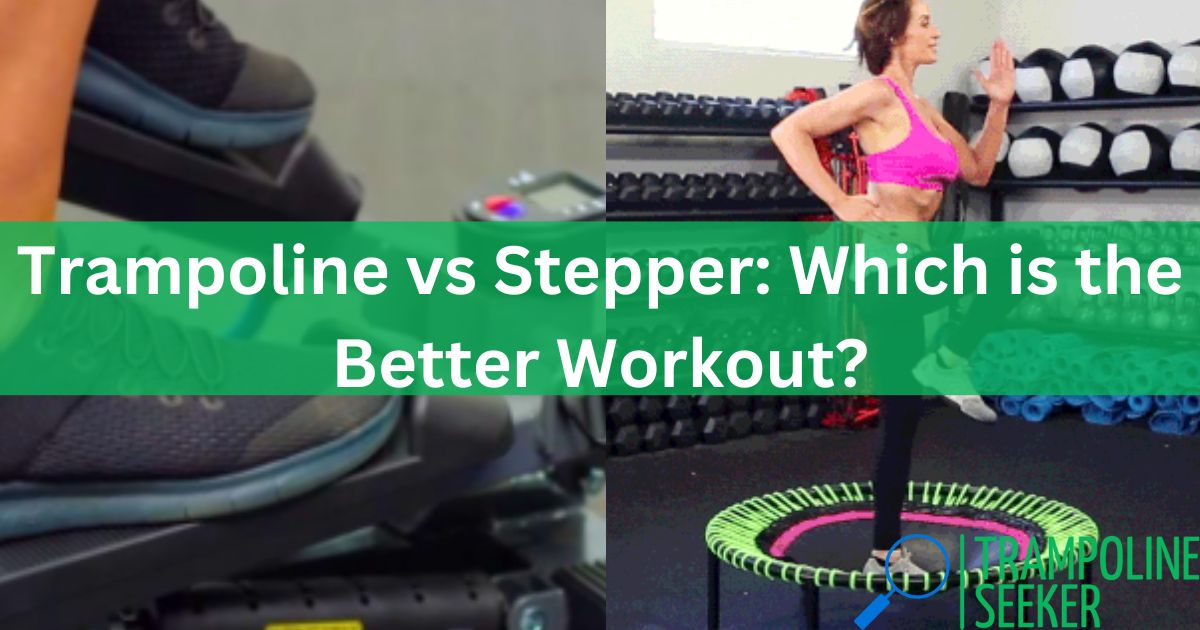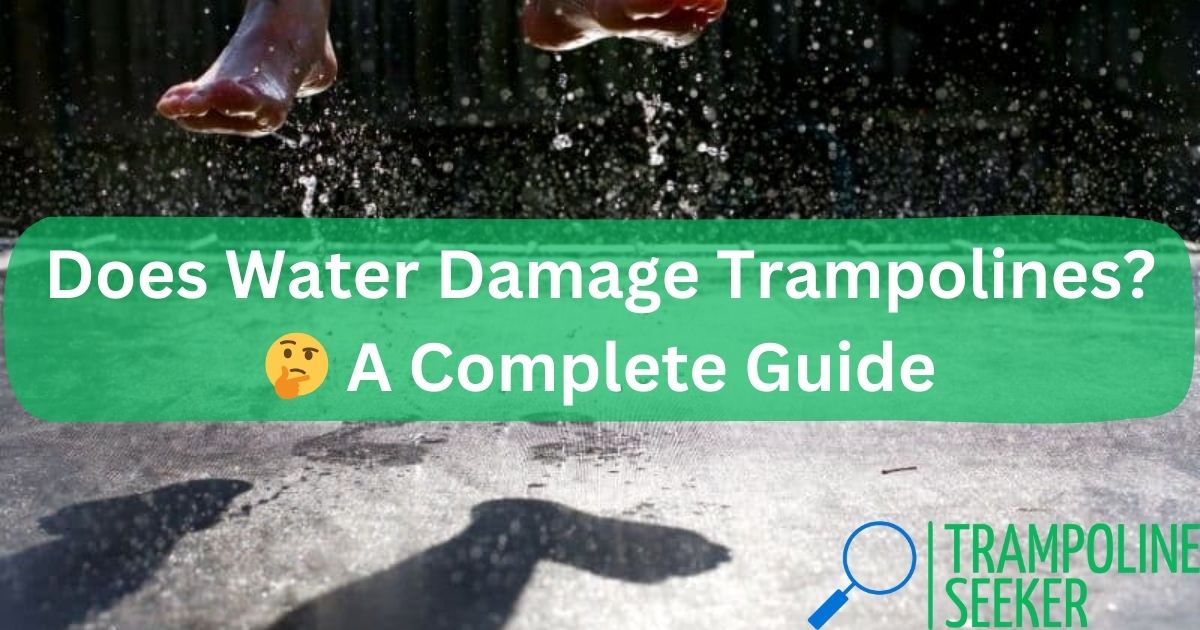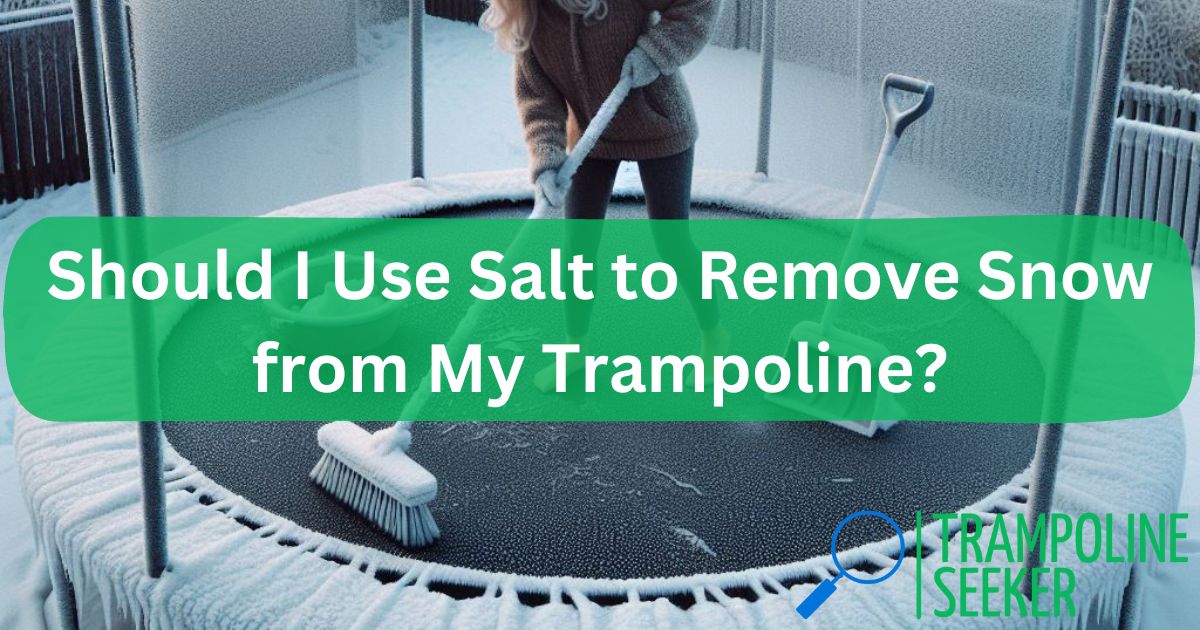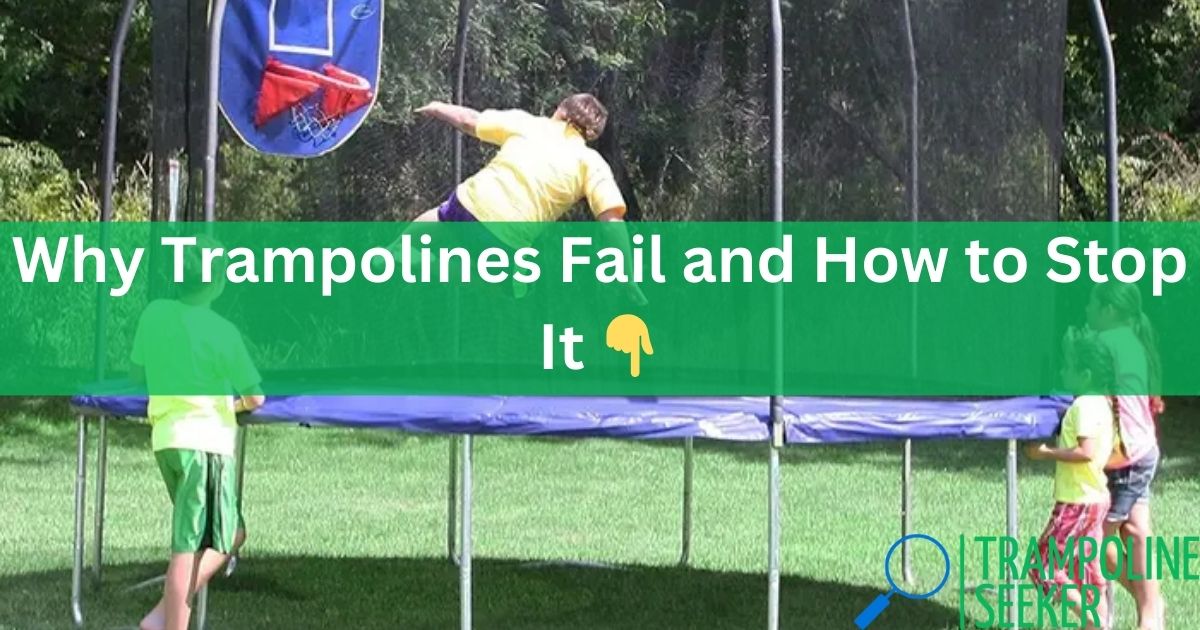If the trampoline you are currently using loses its bounce and you are wondering how to make your trampoline bouncier, the following tips may help you. The trampoline is a device made from a strong fabric sheet stretched on a steel frame supported by a spring and a coiled spring. Currently, trampolines are very popular as outdoor activities in the modern world. Among the various uses of trampolines, they are used for exercising and recreation.
They are popular both in kids and adults also. Exercise with trampolines develops balance, coordination, and motor skills and can help improve balance. For people who have joint problems, trampolines can benefit them by relieving pain and allowing them to relax for a while.
There are specific ways to make trampolines bouncer. Regular maintenance and adding springs are among the ways to enhance the bounce on a trampoline. The following article will teach you how to make a trampoline bouncier if you want to master this art. Come on, let’s get started.
Why Making a Trampoline Bouncier Is Important?
To learn how to make your trampoline bouncier, one must first know its benefits. A trampoline is generally considered to be a type of fitness equipment. During the exercises, you will develop muscles and stimulate micro-movements that will make your postural stability more stable. Your training goals may not be attainable if your trampoline does not provide enough bounce.
The trampoline that you have installed for your kids is also intended to make them feel as excited as possible with its maximum bounce. This will allow them to feel weightless and allow them to enjoy tumbling down as much as possible they can. It is important to remember that no matter what purpose you have installed the trampoline for, the primary objective is to bounce on it.
What Factors Should You Consider When Making a Trampoline Bouncier?
With a bouncy trampoline, the jumper can fly high in the sky. Having good grass beneath the trampoline is important so that if you fall on the ground suddenly, you won’t be too injured or cause trampoline back pain. There are also a few things you need to confirm.
Is There Any Spring Pad On Your Trampoline?
A spring cover protects jumpers from the impact of springs. If you have a high bounce, you will be dropped more drastically on the trampoline bed and springs. To prevent yourself from getting hurt when jumping on a bouncy trampoline while pregnant, you need to get a thick padded spring cover that will protect your back.
Is There Any Safety Net On Your Trampoline?
You will have a lower chance of a safe landing if you jump higher unless you are an expert. Despite this, installing a high enclosure net can reduce the chances of getting injured if you fall outside. Additionally, it will protect you from hitting the frame. To enhance the safety of the net poles, they can also be padded.
Tools & Accessories Needed to Make Trampolines Bouncy
A trampoline can be improved with the use of several tools and accessories that will increase its bounce capacity, including:
- Springs – If you want to replace or install new ones.
- Spring puller – Helps in removing or installing the springs.
- Rust removal paste – Remove springs rust quickly.
- Gloves – Provide hand safety.
- Mallet – Fixes the springs in place.
6 Best Ways On How to Make Your Trampoline Bouncier
Here’s the most important part of the article. It’s time to talk about how to improve the power of your trampoline jumps.
Replace Existing Springs
A rusted spring won’t be able to stretch properly, which means you won’t be able to jump as high as you would like. Furthermore, if a spring has been used for many years, it will lose its elasticity, mainly if used repeatedly. For them to bounce better, they need to be replaced.
Identify any springs that are rusted, broken, or stretched to correct them. Afterward, replacing them with new ones would be a good idea. This will enable you to restore the trampoline’s bouncing capacity.
Add More Springs
Another way to increase bounce on a trampoline is to add more springs to the trampoline. Therefore, you should make sure that you purchase springs that are of high quality. How many springs you need to buy depends on how you want to make your trampoline springier and how many springs you already have.
For example, if you attach double or triple springs in a rung. The jumping power of the trampoline will undoubtedly increase; however, the spring life of the trampoline may also be compromised.
Routine Maintenance
This is one of the most basic ways to determine if your trampoline is working properly or not. The results of a routine checkup will tell you if there are any deteriorations or faulty parts. During this inspection, you should ensure that the mats or nets are in good condition, the metal parts or springs are corrosion free, the springs are not broken, or the safety pads have not deteriorated.
If you find a broken spring, you should replace it with a new one as soon as possible. Rusty springs can be treated with rust prevention treatments such as lemon solution or rust removal paste to prevent them from rusting. The repair kit should also be used to patch up the holes in the mat. All of these factors will have a positive impact on the trampoline’s overall lifespan as well as the trampoline’s ability to bounce.
Attach Stronger Springs
The bouncing isn’t enough yet after replacing the older springs. Why aren’t you trying the heavy-duty springs? Generally, the stronger the springs are, the more energy they can store and exert. As a result, you will get a higher bounce.
Even though strong springs are more expensive than standard springs, you will benefit in the long run. It is an excellent idea that you can use without hesitation if you are wondering how to make your trampoline bouncier without crossing the springs of your trampoline.
The trampolines will have excellent bounce and quality springs if you invest little money into them.
Double Spring Trampoline
By doing this, you can increase the bounce of a trampoline. Ideally, double-layer springs should be added to the whole spring array of a trampoline, or at the very least to several points on the trampoline. Spring can be added linearly or crossed. You can make your adult trampoline bounce more with the help of an attachment like this one.
What Causes Trampolines to Lose Their Bounce?
There are several reasons why trampolines lose their springiness over time. Here are a few of the most important ones:
Broken Springs
Jumping or falling something heavy may cause springs to break. The power of bouncing will be significantly reduced if the spring is broken or cracked.
Rusty Springs
Lack of maintenance may result in the springs becoming rusted if we leave them to sit on the ground for long periods. A spring’s lifespan and bouncing power will be reduced when it is rusted. You will not be able to get the bounce you want if it sticks the springs together.
Worn Jumping Mat
It is important to keep in mind that if there is a hole or wear on the jumping mat because the jumper hits the mat anyway, the surrounding area will not be able to bounce back to its original condition.
Lost Elasticity
This is the most common reason why trampolines lose bounce over time. You will naturally lose the elasticity of the springs on trampolines over time if you jump on them for years at a time as a result of jumping on them for years at a time. Like a slinky, they won’t bounce again once they are stretched.
Exceeding Weight Capacity
The load-carrying capacity of each trampoline differs depending on its structural design. If you somehow manage to exceed this limit, there is a high probability that the trampoline will break or at least become less durable and bounce.
Conclusion
It is a natural process for a trampoline to lose bounce over time. In any case, you cannot prevent this from happening. You can prevent this problem by maintaining the trampoline regularly, replacing the faulty springs, and installing performance springs, double springs, and crossing springs on it.
Make sure that the springs are replaced by a professional technician in order to ensure that the springs are in good condition.
Related Articles:













